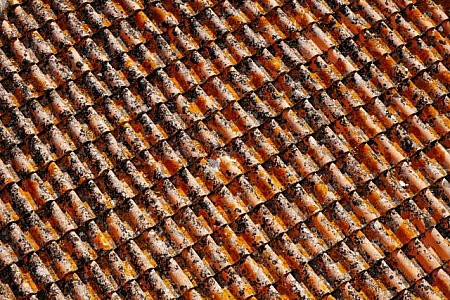[多媒体辅助教学之反思]随着科技的不断发展,我们的教学工具也越来越先进了。多媒体教学已经深入每一个教学场所。但对于多媒体带来的,难道都是利么?这个问题值得我们好好考虑的。以前,没有电脑,老师上...+阅读
puter-aided design (CAD)
puter-aided design (CAD) is the use of a wide range of puter-based tools that assist engineers, architects and other design professionals in their design activities. It is the main geometry authoring tool within the Product Lifecycle Management process and involves both software and sometimes special-purpose hardware. Current packages range from 2D vector based drafting systems to 3D parametric surface and solid design modellers.
CAD is sometimes translated as "puter-assisted", "puter-aided drafting", or a similar phrase. Related acronyms are CADD, which stands for "puter-aided design and drafting", CAID for puter-aided Industrial Design and CAAD, for "puter-aided architectural design". All these terms are essentially synonymous, but there are some subtle differences in meaning and application. Contents
Introduction
CAD is used to design and develop products, these can be goods used by end consumers or intermediate goods used in other products. CAD is also extensively used in the design of tools and machinery used in the manufacture of ponents. CAD is used throughout the engineering process from conceptual design and layout, through detailed engineering and analysis of ponents to definition of manufacturing methods.
Fields of use AEC Architecture Engineering and Construction MCAD Mechanical Automotive Aerospace Consumer Goods Machinery Ship Building ECAD Electronic and Electrical Manufacturing process planning
Architecture
The software package may produce its results in several formats, but typically provides a graphically-based result which is then able to be used to create concept sketches for assessment and approval, and eventually working drawings. An example would be a structural design package used to assess the integrity of a steel-framed building by performing all the calculations necessary to determine the size and strength of the ponents, and the effect of such things as wind-loading. The output monly is a schedule of materials and some basic sketches which can be transferred to a puter-aided drafting package for final production of construction working drawings.
puter-aided drafting, however, monly refers to the actual technical drawing ponent of the project, using a puter rather than a traditional drawing board. The input into this aspect of the design process may e from specialised calculation packages, from pre-existing ponent drawings, from graphical images such as maps, from photos and other media, or simply from hand-drawn sketches done by the designer. The operator's task is to use the CAD software to meld all the relevant ponents together to produce drawings and specifications which can then be used to estimate quantities of materials, determine the cost of the project and ultimately provide the detailed drawings necessary to build it.
The spectrum of architectural and engineering projects monly documented with puter-aided drafting is broad, and includes architectural, mechanical, electrical, structural, hydraulic, interior design, civil construction. CAD may also provide input to other forms of design munication such as 3D visualisations, model construction, animated fly-throughs, to name a few.
puter-aided drafting software is also a basic tool used in other disciplines related to Architecture, for example Civil Engineering, for site design, for instance roads, grading and drainage, in mapping and cartography, in the production of plans and sketches for a variety of other purposes (such surveyor's plans and legal deions of land), and as the input format to geographic and facilities information systems. Additionally, landscape architecture and interior design is often also monly performed using CAD software
Mechanical
CAD is used in a variety of ways within engineering panies. At its simplest level it is a 2D Wireframe package that is used to create engineering drawings. This has however over the last 20 years been overtaken by 3D parametric feature based modelling. ponent forms are created either using Freeform surface modelling or solid modelling or a hybrid of the two. These individual ponents are then assembled into a 3D representation of the final product; this is called bottom-up design. These assembly models can be used to perform analysis to assess if the ponents can be assembled and fit together as well as for simulating the dynamics of the product. FEA can also be performed on the ponents and assemblies to assess their strength. Over the last few years, methods and technology he been developed to do top-down design within CAD. This involves starting with a layout diagram of the product; which is broken down into sub-systems with ever increasing detail until the level of single ponents is reached; geometry in each level being associative with the level above. Detailed design of the individual ponents is then pleted before building up the final product assembly. In general the 3D models are used to generate a 2D technical drawing, this has, however, been slowly replaced by direct transfer of the data to CAM, CNC , Rapid prototyping and Product visualization systems, non geometric information being municated to down-stream processes with the aid of PMI.
Electrical and Electronic
Electronic design automation (EDA) includes PCB design, intelligent wiring diagrams (routing) and ponent connection management.
Manufacturing process planning
2D and 3D CAD systems are sometimes used for graphically represented of plant layout, usually with the aid of specific machine geometry libraries and layout tools. Although this is often done with specialist real-time process simulation tools based on Product visualization and Manufacturing Process Management technologies.
History
Designers he long used puters for their calculations. Initial developments were carried out in the 1960s within the aircraft and automotive industries in the area of 3D surface construction and NC programming, most of it independent of one another and often not publicly published until much later. Some of the mathematical deion work on curves was developed in the early 1940s by Isaac Jacob Schoenberg, Apalatequi (Douglas Aircraft) and Roy Liming (North American Aircraft), however probably the most important work on polynomial curves and sculptured surface was done by Pierre Bezier (Renault), Paul de Casteljau (Citroen), S.A. Coons (MIT, Ford), James Ferguson (Boeing), Carl de Boor(GM), Birkhoff(GM) and Garabedian(GM) in the 1960s and W. Gordon (GM) and R. Riesenfeld in the 1970s.
It is argued that a turning point was the development of SKETCHPAD system in MIT in 1963 by Ivan Sutherland (who latter create

d a graphics technology pany with Dr. Did Evans). The distinctive feature of SKETCHPAD was that it allowed the designer to interact with puter graphically: the design can be fed into the puter by drawing on a CRT monitor with a light pen. Effectively, it was a prototype of graphical user interface, an indispensable feature of modern CAD.
First mercial applications of CAD were in large panies in the automotive and aerospace industries, as well as in electronics. Only large corporations could afford the puters capable of performing the calculations. Notable pany projects were at GM (Dr. Patrick J.Hanratty) with DAC-1 (Design Augmented by puter) 1964; Lockhead projects; Bell GRAPHIC 1 and at Renault (Bezier) 每 UNISURF 1971 car body design and tooling.
The most influential event in the development of CAD was the founding of MCS (Manufacturing and Consulting Services Inc.) in 1971 by Dr. P. J. Hanratty, who wrote the system ADAM (Automated Drafting And Machining) but more importantly supplied code to panies such as McDonnell Douglas (Unigraphics) putervision(CADDS), Calma, Gerber, Autotrol and Control Data.
As puters became more affordable, the application areas he gradually expanded. The development of CAD software for personal desk-top puters was the impetus for almost universal application in all areas of construction.
Other key points in the 1960s and 1970s would be the foundation of CAD systems United puting, Intergraph, IBM, Intergraph IGDS in 1974 (which led to Bentley MicroStation in 1984)
CAD implementations he evolved dramatically since then. Initially, with 2D in the 1970s, it was typically limited to producing drawings similar to hand-drafted drawings. Advances in programming and puter hardware, notably solid modelling in the 1980s, he allowed more versatile applications of puters in design activities. Key product for 1981 were the solid modelling packages - Romulus (ShapeData) and Uni-Solid (Unigraphics) based on PADL-2 and the release of the surface modeler Catia (Dassault). Autodesk was founded 1982 by John Walker, which led to the 2D system AutoCAD. The next milestone was the release of Pro/Engineer in 1988, which heralded greater usage of feature based modeling methods. Also of importance to the development of CAD was the development of the B-rep solid modeling kernels (graphics engines) Parasolid(ShapeData) and ACIS (Spatial Technologies) at the end of the 1980s beginning of the 1990s, both inspired by the work of Ian Braid. This led to the release of mid-range packages such as SolidWorks in 1995 SolidEdge (Intergraph) in 1996.
Today CAD is not limited to drafting and rendering, and it ventures into many more "intellectual" areas of a designer's expertise.
Software providers today
This is an ever changing industry with many well know products and panies being taken over and merged with others. There are many CAD software products currently on the market. More than half of the market is however covered by the four main PLM corporations Autodesk, Dassault Systemes, PTC, and UGS Corp., but there are many other CAD packages with smaller user bases or covering niche user areas.
Packages are can be classified into 3 types: 2D drafting systems (e.g. AutoCAD, Microstation); mid-range 3D solid feature modellers (e.g. SolidWorks, SolidEdge, Alibre); and high-end 3D hybrid systems (e.g. CATIA, NX (Unigraphics)). However these classifications cannot be too strictly taken as many 2D systems he 3D modules, the mid-range systems are increasing their surface functionality, and the high-end systems he developed their user interface in the direction of interactive Windows systems.
Capabilities
The capabilities of modern CAD systems include: Wireframe geometry creation 3D parametric feature based modelling, Solid modelling Freeform surface modelling Automated design of assemblies, which are collections of parts and/or other assemblies create Engineering drawings from the solid models Reuse of design ponents Ease of modification of designs of model and the production of multiple versions Automatic generation of standard ponents of the design Validation/verification of designs against specifications and design rules Simulation of designs without building a physical prototype Output of engineering documentation, such as manufacturing drawings, and Bills of Materials to reflect the BOM required to build the product Import/Export routines to exchange data with other software packages Output of design data directly to manufacturing facilities Output directly to a Rapid Prototyping or Rapid Manufacture Machine for industrial prototypes maintain libraries of parts and assemblies calculate mass properties of parts and assemblies aid visualization with shading, rotating, hidden line removal, etc……
Bi-directional parametric associatively (modification of any feature is reflected in all information relying on that feature; drawings, mass properties, assemblies, etc…… and counter wise) kinematics, interference and clearance checking of assemblies sheet metal hose/cable routing electrical ponent packaging inclusion of programming code in a model to control and relate desired attributes of the model Programmable design studies and optimization Sophisticated visual analysis routines, for draft, curvature, curvature continuity……
Software technologies
Originally software for CAD systems were developed with puter language such as Fortran, but with the advancement of Object-oriented programming methods this has over the last decade or so radically changed. The development of a typical modern Parametric feature based modeler and freeform surface systems are built around a number of key, C programming language, modules with their own APIs. A CAD system can be seen as built up from the interaction a GUI with an Associative engine and Geometry constraint engine controlling BREP, CSG and NURBS geometry via a Geometric modeling kernel.
Hardware and OS technologies
Today most CAD puter workstations are Windows based PCs; some CAD systems also run on hardware running with one of the Unix operating systems and a few with Linux. Generally no special hardware is required with the exception of a high end OpenGL based Graphics card; however for plex product design machines with high speed (and possibly multiple) CPUs and large amount of RAM are remended. The human-machine interface is generally via a puter mouse but can also be via a pen and digitizing graphics tablet. Manipulation of the view of the model on the screen is also sometimes done with the use of a spacemouse/spaceball. Some systems also support stereoscopic glasses for viewing the 3D model.
以下为关联文档:
直观教学辅助,提升教学效果三年级的孩子由于其特殊的年龄特点,抽象能力有了一定的发展,但是仍离不开形象直观的支持,他们正从形象思维向抽象思维慢慢地过渡。在数学教学中,通过直观的教学,能起到很好的教学...

做完艾灸能吃东西吗艾灸完后吃哪些食物有辅助作用做完艾灸能吃东西吗?做完艾灸后不能立刻吃东西,要隔半个小时再吃东西,这样对艾灸后的效果保持要好些,一面艾灸后吃东西食物消化影响血液运行。具体分析:1、通常情况下,艾灸后立...

天气热了,现在给宝宝添加辅助食品合适吗时间:2004年7月4日 14:02 15:08提问:guest回答:洪昭毅(原世界卫生组织儿童生长发育合作中心主任)guest:宝宝四个月了,给他加辅食,用水把蛋黄调稀后喂他喝,可宝宝不愿意喝怎么办?[14...

商业计算机电脑辅助调度puter-assisted dispatchputer-assisted dispatch (also called CAD) is a method of dispatching taxicabs, couriers, field service technicians, or emergency service...

商业计算机电脑辅助生产制造puter-aided manufacturingIntegrating puter-aided manufacturing (CAM) with puter-aided design systems produces quicker and more efficient manufacturing processe...

慢性肾功能衰竭的实验室及辅助检查慢性肾功能衰竭的实验室及辅助检查:1.尿液检查尿常规蛋白一般为(十)一(++),晚期肾功能损害明显时尿蛋白反见减少。尿沉渣镜检有不同程度的血尿、管型尿,粗大宽阔的蜡状管型对慢性肾...

下肢深静脉血栓形成辅助检查小腿肌肉静脉丛血栓形成,症状隐晦,且不典型,常难以确诊。髂股静脉血栓形成、混合型及股青肿,具有较为典型的临床表现,一般诊断多无困难。但是为了确定诊断,明确病变范围,可选用下列...
浆细胞瘤的辅助检查一、实验室检查 1.骨髓涂片 在浆细胞瘤的初期,诊断不明确时,骨髓涂片常能确诊,但阴性并不能除外浆细胞瘤的可能。如果涂片有3%的浆细胞,就应怀疑浆细胞瘤的可能;如果有10%的浆,浆...
正确选择辅助检查方法三、正确选择辅助检查方法(影像申请单、检验项目等) 临床与口腔疾病相关的辅助检查主要有: 1.实验室检查 如临床检验、生物化学检验和细菌学及血清学检验等。 2.穿刺、涂片及活...



